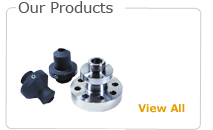|
NDT Inspection (UT, RT, ET, MT, PT)
We provides a full range of inspection services for process plants, storage tanks, pressure vessels, piping, heat- exchangers, turbines and compressors using a variety of methods, including: -
Ultrasonic Thickness Measurement
NESCON’s UTT measures remaining wall thickness on piping, pressure vessels, storage tanks and other materials, and can be used to scan bolts, shafts and raw materials for imperfections. A straight beam is directed at the test piece and, utilizing the round trip time for the ultrasonic energy, the distance to the flaw is displayed in thousandths of an inch. On UT units with A-scan, the display will show multiple flaws at different depths.
Magnetic Particle Testing
MT detects surface and near-surface imperfections such as cracks, seams and laps in ferromagnetic materials, and is used to assess location, size, shape and extent of these imperfections. When the test object is magnetized, flaws perpendicular to the magnetic field direction cause flux leakage. Magnetic particles applied to the surface are held at the location of the imperfection by flux leakage. MPT Includes:-
- Wet Fluorescent Testing
- Wet Fluorescent Testing with A/C Hand Yoke
- Wet MPT with A/C Hand Yoke, Black & White Contrast.
Hardness Testing
Indentation hardness tests are used to determine the hardness of a material to deformation. Different techniques are used to quantify material characteristics and tendencies.
Dye Penetrant
NESCON utilizes LP inspection to detect surface discontinuities in both ferromagnetic and non-ferromagnetic materials. In castings and forgings, these may be cracks or leaks in new products or fatigue cracks in in-service components. Testing is performed using visible red dyes under visible light conditions or fluorescent dyes under ultraviolet light. As the name implies, the dyes penetrate into the surface discontinuities by capillary action. After the excess material is removed from the material being tested, indications will appear. Evaluation and classification of material is based on code or customer requirements.
Radiography
Conventional Radiography is a nondestructive examination method that uses X-ray and Gamma ray for detecting internal imperfections, for measuring wall thickness and for detection of corrosion. With RT, the material is exposed to a homogenous ray from a radioactive isotope or an X-ray tube while a negative film is positioned behind the material to be examined. After development of the film, thickness and density differences (material imperfections) will show as blackness differences. Acceptance criteria define whether or not the indication is non-acceptable (a defect) or not.
Visual Inspections
NESCON uses the Visual Inspection process on structures, mechanical and electrical components, welds, piping and other hardware. VT visually checks areas to verify that they meet the applicable code or standard. Inspection may include magnification, remote optical viewing devices and additional measurement tools.
|




